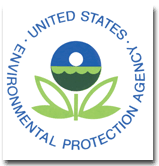 T
The Environmental Protection Agency’s (EPA) proposed standard covering toxic air pollutant
emissions is not likely to sit very well with U.S. textile manufacturers. The long-awaited
standard, as currently proposed, could have a major impact on virtually all dyeing and finishing
operations as the government moves toward its goal of achieving Maximum Achievable Control
Technology. The proposed standard would make significant revisions in the way dyeing and finishing
operations calculate the amount of hazardous air pollutants they release into the air.
At present, textile plants are permitted to calculate the fraction of organic hazardous air
pollutants they believe are actually emitted from water solutions. Under the proposed rule,
companies would have to assume that 100 percent of the organic hazardous materials entering a plant
are in fact emitted into the air.
Once the permissible levels of hazardous emissions are exceeded, companies must either
change the finishing materials they are using or modify their emissions controls, something that
could prove quite costly.
Textile manufacturers attending a recent EPA briefing on the proposed standard raised a
number of concerns about the effect of the standard. They were particularly concerned about the
permissible emission levels and the fact that the measuring period does not take into consideration
seasonal changes or product mix changes.
As is always the case with such regulations, the comment period will drag on for some time,
but textile companies need to let the EPA know of their concerns.
Flammability Regulations Overhaul Proposed
The staff of the Consumer Product Safety Commission (CPSC) is proposing a major overhaul of
its standards under the Flammable Fabrics Act, saying that the 50-year-old regulations are out of
step with today’s products and current cleaning and care practices.
In calling for an Advance Notice of Proposed Rulemaking, the CPSC said numerous new
technologies, products and modern equipment have been developed since the original standard was
issued in 1953. The staff is particularly interested in how its test methods might be updated to
reflect modern technologies, new products and consumer practices.
A Federal Register notice will seek information from the fiber, textile and apparel
industries, safety and health organizations, and other interested parties to help determine the
best ways to bring the standards up to date.
Textile Rules Of Origin Under Attack
India, which has long been a thorn in the side of the U.S. textile industry, has launched an
attack on the U.S. textile country of origin rules, and the World Trade Organization (WTO) has
agreed to consider India’s complaint. India has never liked the country of origin rules, which are
basically designed to police textile and apparel quota agreements and prevent illegal
transshipments of products made in Third World countries.
In its complaint to the WTO, the government of India contends the rules of origin
incorporated in the U.S. Trade Development Act of 2000 are “extraordinarily complex” and are
applied in an inconsistent fashion, and, therefore, are illegal under the WTO’s trade regulations.
The basis for India’s complaint is that the criteria for determining the country of origin
of silk products such as neckties and scarves are different from those for cotton and wool
products, and other types of wearing apparel and made-up goods. U.S. trade officials say the U.S.
rules are practical and make common sense, and are consistent with WTO regulations.
They believe the Indian complaint eventually will be turned down. However, if India should
prevail, the complaint could have a major impact on the worldwide U.S. textile and apparel import
quota system, which remains in effect until 2005.
Industry Fears Erosion Of Customs Inspections
U.S. textile industry officials are afraid the Customs Service’s efforts to combat textile
and apparel import fraud could become a casualty in the war on terrorism.
In testimony before the House Ways & Means Committee, the American Textile Manufacturers
Institute (ATMI) warned that the “essential mission” of the Customs Service could be weakened if
that agency is transferred to the new Department of Homeland Security.
Pointing out that illegal imports of textiles and apparel amount to “billions of dollars
each year,” ATMI said: “Any redeployment of Customs’ assets from the Department of the Treasury to
a newly-created cabinet-level Department of Homeland Security must not in any way diminish or
impair Customs’ ability to investigate, detect and interdict illicit textile and apparel trade.”
In recent years, Customs enforcement of textile and apparel imports has suffered as that
agency devoted more of its resources to the war on drugs. The Bush administration has made a firm
commitment to step up textile apparel fraud enforcement, but that effort could get lost in the
shuffle at the new homeland security agency.
August 2002




